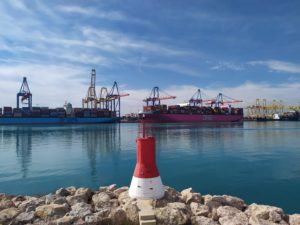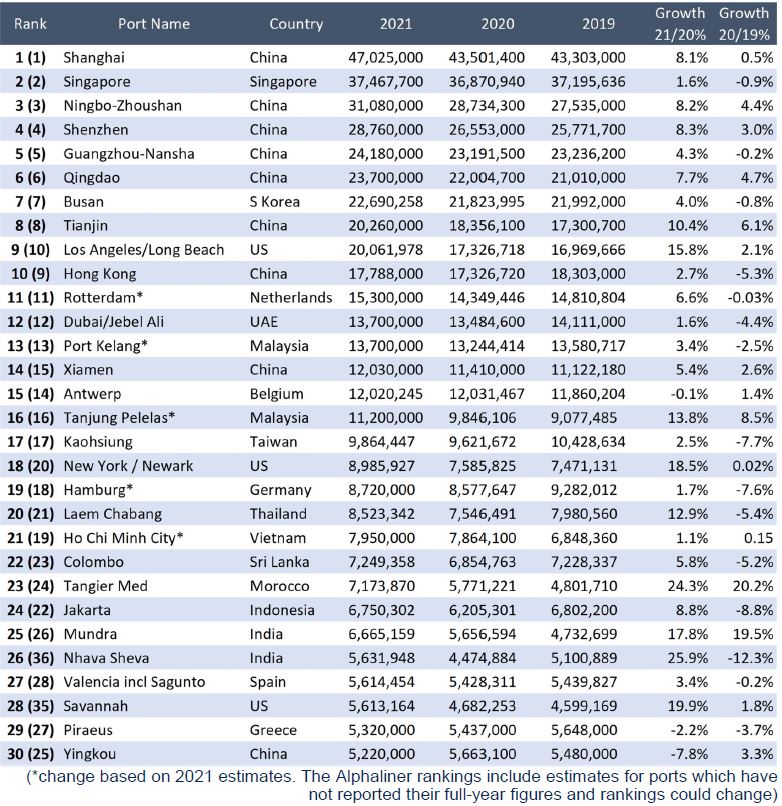
It has moved up one place worldwide to 27th position, according to data for 2021 from the consultancy firm Alphaliner
Aurelio Martínez: “The key to Valenciaport lies in the combination of export/import traffic with transhipment. Transit is fundamental to facilitate connectivity with all the ports of the world”
The president of the PAV is committed to continuing to grow in capacity to facilitate the competitiveness of the companies and their access to any market.
València, February 27th, 2022.- Valenciaport consolidates its strategic position as the fourth port in Europe and the 27th worldwide according to data from the consultancy firm Alphaliner for 2021. With the container data of the 30 main ports in the world, closed on 31 December last year, the Valencian port overtakes the Greek port of Piraeus to consolidate its position as the first European port of reference in the Mediterranean. Globally, it has also improved by one place compared to the 2020 ranking. For the president of the Port Authority of Valencia (PAV), Aurelio Martínez, this world ranking “shows the strength of the Port of Valencia and the impact it has on world traffic”.
According to Alphaliner’s report, the ranking is led by the Asian ports (Shanghai, Singapore and Ningbo). To find the first European port, one has to go to the eleventh position occupied by Rotterdam, followed by Antwerp in 15th place, Hamburg in 19th, Valencia in 27th place and Piraeus in 29th. Among the venues on the old continent, Valencia is the only one to move up a position. On the other hand, the main increases are in Indian ports (Mundra and Nhava Sheva), American (Los Angeles and New York) and Moroccan (Tangiers).
The report highlights the importance of mixed ports, which are those that concentrate cargo and transhipment. In the case of Valenciaport, Alphaliner points out that in 2021 the Valencian docks handled 5,614,454 containers, 3.4% more than the previous year, which consolidates it as a strategic hub in the Mediterranean. For the president of the PAV, the key to Valenciaport is “the combination of export/import traffic with transhipment. Transit is fundamental to facilitate connectivity with all the ports of the world. Thanks to the fact that we have sufficient volume for shipping lines to dock in Valencia, exporters and importers operating in Valenciaport have more competitive prices. If this were not the case, they would have to go to other ports with the increase in costs that this would entail”.
Continue growing to remain strategic
Alphaliner’s analysis indicates that the world’s top 30 ports handled 450 million containers during last year compared to 421 million in 2020. This figure reflects the fact that world maritime trade continues to grow, and the main ports are increasing their capacity. For Aurelio Martínez, “the size of the ports is important to attract the large ships that move goods worldwide and to continue to have connectivity so that companies can have access to any market in the world at the lowest possible cost”. “Valenciaport could have grown more in 2021 but, as has happened in other ports, some of the ships have had to go to other destinations because we have been close to congestion”, concludes the president of the PAV.
In this sense, Valenciaport’s Business Plan 2021-2025 contemplates a total of 1,098 million euros in investments to develop sustainable infrastructures such as the northern container terminal that will increase the capacity of the Port of Valencia, the improvement of railway connections or the development of clean energies, among others.


